How To Plant Small Snake Plants and Succulents In Small Pots
Small snake plants and succulents will do just fine in small pots for a couple of years. Here’s how to plant snake plants and succulents in small pots.
Time to fess up: I’m a pot addict. No, not the aromatic herb you smoke or ingest but the pretties which hold, adorn and accent plants. Whether they be ceramic, resin, fiberglass or concrete, plant pots and containers always catch my eye. Here’s how I planted small snake plants and succulents in small ceramic pots I just had to have – you know how that goes!
This post may contain affiliate links, you can read our policies here.
Talavera Pottery (Small Pots)
Talavera pottery is abundant here in Tucson and I love its colorful and intricate patterns. I favor the less traditional designs and bought 2 small pots a bit more modern side. The solid red ceramic was cheap as can be at a nursery up in Phoenix and although I had to drill a hole in the bottom, it practically jumped in my hands.
At my work table planting the snake plants and succulents:
I wanted to do this post and video to let you know these smaller growing succulents and dwarf snake plants are very well suited to grow in small pots like these. I’ve gotten as few questions as to how long they can grow in pots this size and the answer is at least 2 years. The succulents have a shallow root system and the snake plants don’t mind growing tight in their pots at all. These are great indoor plants for apartment dwellers!
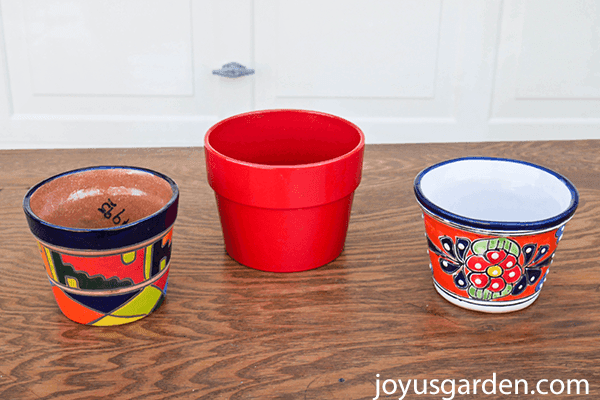
My sweet little colorful pots, all of them brand new.
In fact, don’t rush to transplant Snake Plants every year or 2 as they prefer to grow slightly pot bound. As a general rule, I repot mine every 3-6 years depending on the size of the pot it’s growing in and the size of the plant itself. It’s best not to repot houseplants in winter because the plants are resting.
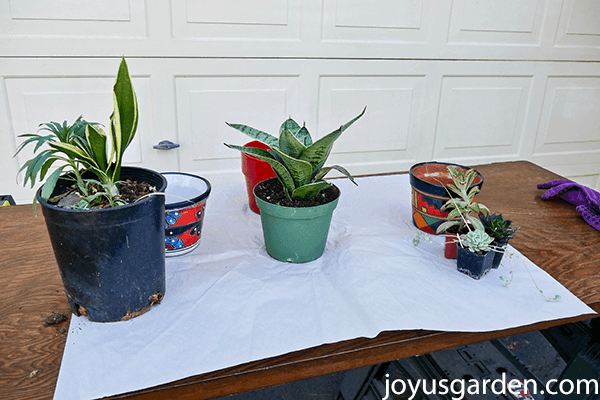
The plants & the pots they were going in. The dwarf Laurentii Snake Plant in the 1-gallon pot on the left came from my garden in Santa Barbara. It was what remained of a larger planting & the 1 single rhizome with the growth was happy to finally be repotted.
Use These Materials for Planting the Mixes
Organic Succulent & Cactus Mix
Both snake plants & succulents prefer to be kept on the dry side & the mix they’re planted in must drain freely. I used straight succulent & cactus mix for the succulent planting.
For the snake plants, I used 2/3 potting soil to 1/3 succulent and cactus mix. I use 1 which is produced locally & succulents love it. This one is good too. If you’re using a store-bought mix like the one in the link, you might consider adding some pumice or perlite to further up the ante on the aeration & lightness factor.
Charcoal
I had some leftover charcoal from this project & added a handful or so to each pot. This is optional but what charcoal does is improve the drainage & absorb impurities & odors. For this reason, it’s great to mix into your soil mix when doing any indoor potting project. Charcoal: Not necessary but it does improve the drainage & aeration & absorbs odors. Because I had some I thought it would be good to use in these small pots.
Compost
I also toss in a few sprinkles of organic compost as I’m planting. Each pot was topped off with a 1/4″ layer topping worm compost. This & the compost is how I feed my houseplants. I go much lighter on both the compost and the worm compost when repotting houseplants as compared to container plants in my garden. Easy does it.
Organic Potting Soil
I’m partial to Happy Frog because of its high-quality ingredients. It’s great for container planting, including houseplants.
I use Tank’s local compost. Give Dr. Earth’s a try if you can’t find anywhere you live. Both enrich the soil naturally.
Worm Compost: This is my favorite amendment, which I use sparingly because it’s rich. Here’s why I like it so much. Read about my worm compost/compost feeding right here.
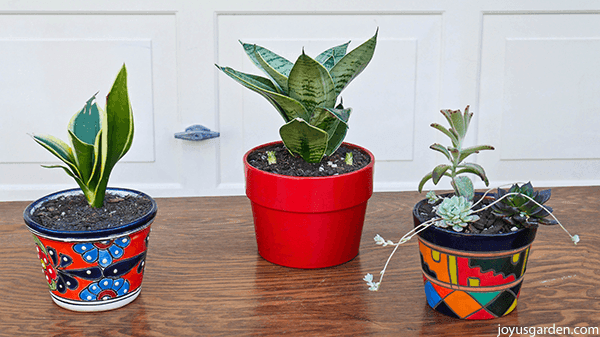
All done. These pots are now in my living room enjoying the company of my many other houseplants.
To see how I planted them, it’s best to watch the video. After planting, I put them in the bright shade underneath my pink grapefruit tree. They settled in for a few days before I give them a thorough watering.
The beauty of succulents and snake plants is they don’t need frequent watering and that’s why they’re so well suited to these smaller pots. The next time you see a small pot you love, go ahead and buy it if you’d like. Small succulents and snake plants are a great match for these small pots!
Happy gardening,

YOU MAY ALSO ENJOY:

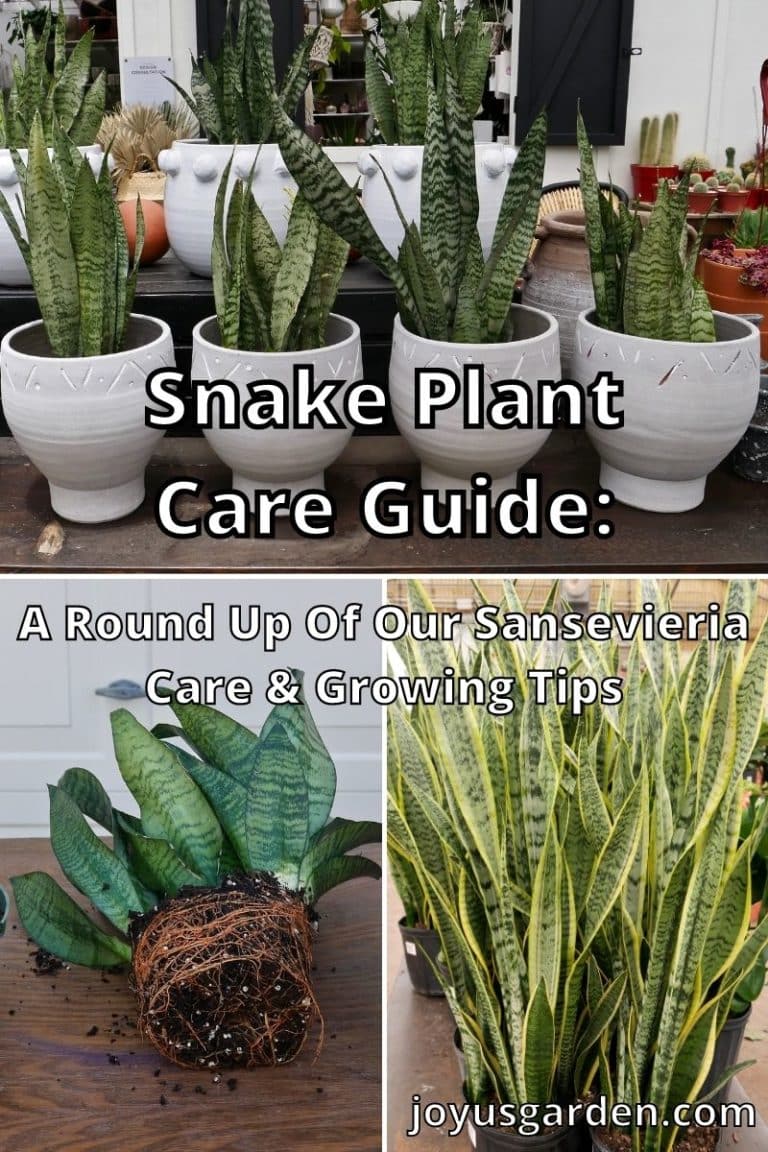
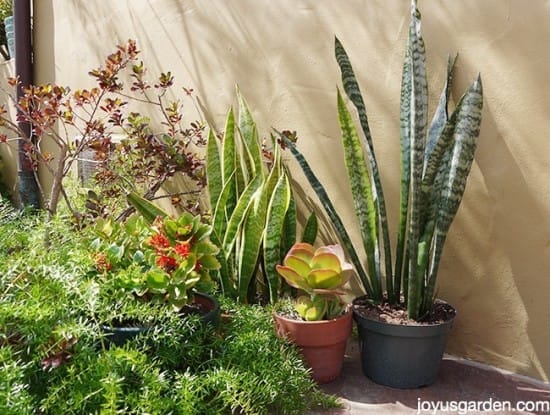
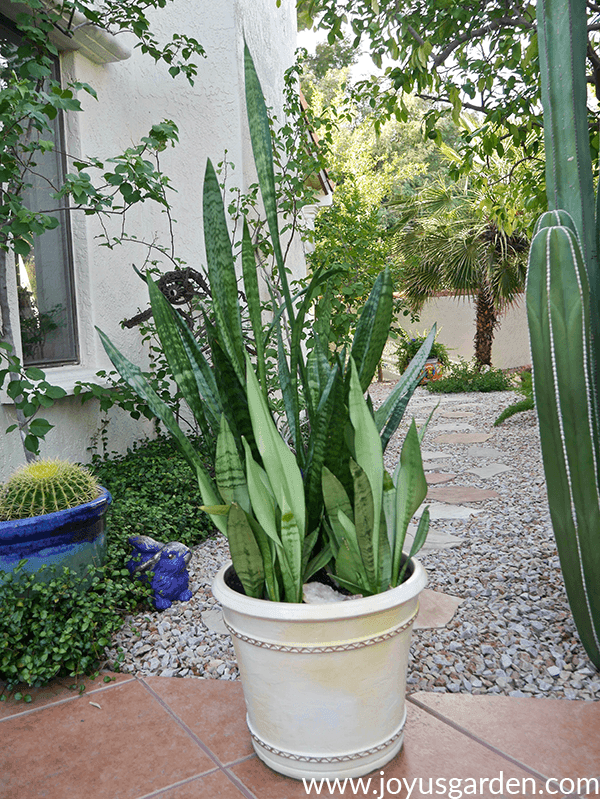
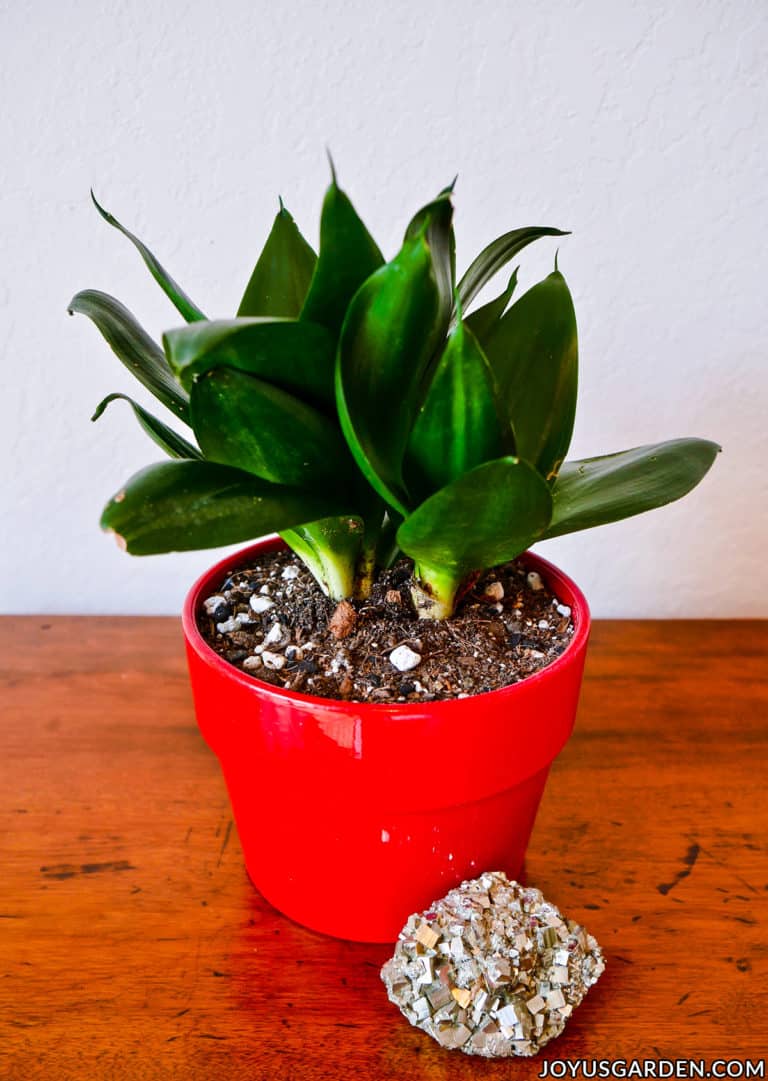

Hi Nell. I know you’re the right person to ask considering how detailed you discuss about plant care tips. I need your advice on what’s the best small indoor plant that can fit a light bulb. I saw a DIY Lightbulb terrarium and I’m fascinated how amazing it looks. Perhaps you can share some tips on how I can take care of it too. thank you in advance.
Hi Nadya – I’ve seen those too, mainly with air plants. I can’t imagine any plant would live too long in a light bulb because they need air circulation. As to plants, I’d try a succulent cutting or too or some type of moss ground cover ie. baby’s tears, one of the many selaginellas, etc. As to watering, how often depends on the type of plant. I’d use an eye dropper for that. Let me know how it goes! Nell